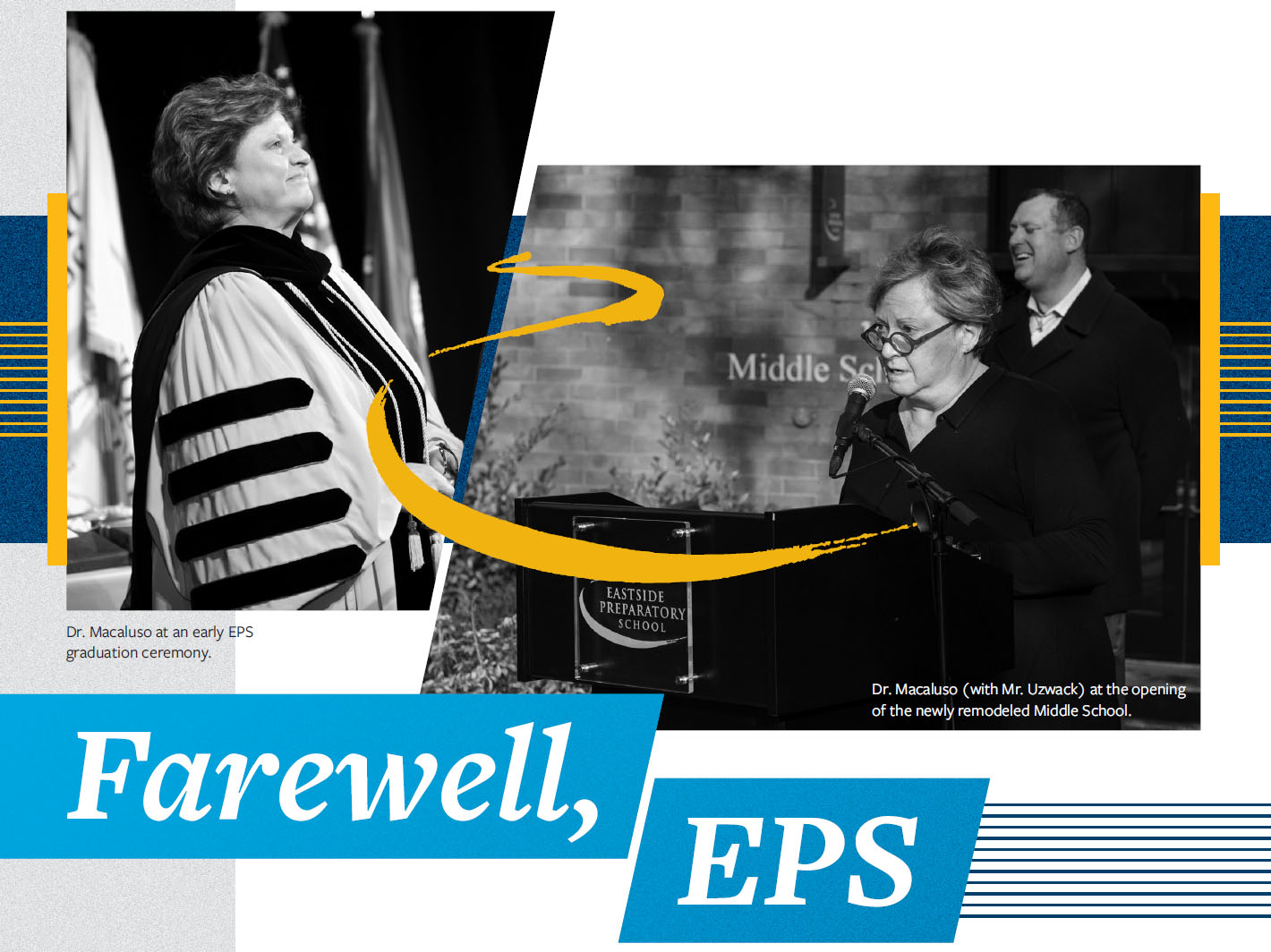
By Dr. Terry Macaluso, Head of School
To make a thing where, once, there was nothing is the entrepreneur’s solemn intent. To succeed in such an endeavor is to put to the test every potential personal attribute—and then some. The distance between “concept” and execution is measured in small successes, large failures, disappointment, and unbridled enthusiasm. There is no instruction manual. There is no guarantee that anything like the original idea will ever exist apart from imagination.
The greatest pleasure in any attempt to make something happen is the collaboration with others who bring their own unique thinking to the creative process. One simple question or comment can change a direction, inspire an entirely new perspective from which to consider the guiding concept. This is an important phenomenon to comprehend. There is no “I” in collaborate.
Nothing happens without the inspiration, vision,
and confidence of one’s colleagues.
There’s another dimension to collaborative interaction. Somebody else has to be interested in your idea. They have to be interested enough to want to share their thinking—without taking over. The entrepreneur has to be confident enough to let others in without fear of losing control. Because if somebody else’s ideas are better—you should say “thank you” and preserve the partnership.
Both of these principles were obvious at the birth of EPS. There were many people involved in shaping the original idea. The idea went through a variety of iterations until it was shaped fully enough to be shared with people who had no awareness of the plan. In the earliest days, the challenge was to describe a school—with no location, no employees, and no curriculum—to families who would be asked to trust it with the education of their children.
The most daunting part of starting the school was the anxiety about whether anyone would enroll. What if they had a school and nobody came?
The greatest pleasure in any attempt to make something happen is the collaboration with others who bring their own unique thinking to the creative process. One simple question or comment can change a direction, inspire an entirely new perspective from which to consider the guiding concept.
Day after day, the trip to the post office was a test of commitment. The post office box was empty for two solid weeks after the recruitment efforts had concluded. And then…at last…there was an envelope in the box. We studied it through the window without actually removing it from the box. I know I was hoping that if we left it in there, more would join. But the excitement could not be controlled. We tore the envelope open, pulled the paper out, and read the following.
My husband and I attended a session to learn about EPS. We were very impressed. Before we submit an application for our sixth grader, can you tell me about your financial aid?
I stopped reading after those first three sentences. Financial aid? Financial aid?? We can’t even hire anyone to teach here—how can we provide financial aid?
That little dose of reality provoked a complete revision of our budget—which was based entirely on hope—without a dollar in the bank.
But then…there were applicants. Families came to us with the hope that we would shape their children and prepare them for the world they would inherit. Now it’s real. Now we need teachers. We need teachers who want to join a school that has no students, no program, and no campus. We need people who are excellent at their craft—who would risk their professional futures by jumping on the bandwagon and say, “Sure, I’ll join this effort! What did you say the name of the school was, and where do I park?”
The location problem was solved when one of the founding trustees signed a lease committing herself and her husband to a multiyear lease on ten buildings they had no idea what to do with. By now, the school had a dozen students and five employees—we needed the main floor of just one of the ten buildings we were leasing. We needed sublesees for the remaining thousands of square feet.
It’s amusing, now, looking back on all of this—remembering the tiny issues that, at the time, seemed impossible to transcend. The relative
simplicity of those early years, when the entire faculty and staff fit around a kitchen table, and everyone was involved in every decision—seems idyllic compared to the now-complex community of 530 students, 460 families, 125 employees, and hundreds—soon to become thousands—of alumni and past parents.
But what a thing it has become! Every day, children’s characters are shaped, intellects are challenged, and creativity is inspired. Every day,
teachers get better at what they do and students benefit from their individual and collective dedication. Every day, when I arrive on campus and observe what we have become, I am filled with admiration and appreciation to all those whose thinking, volunteer hours, financial support, and great humor refused to allow this project to be anything other than successful.
I leave this place, now, with sadness, gratitude, and confidence—sadness that I will no longer spend my days among the extraordinary people who compose this community; gratitude for the opportunity I’ve had to share in the creation of an organization that lives its mission and that aspires, every day, to be better than it was the day before; and confidence in the knowledge that together we have made a thing that will endure.

